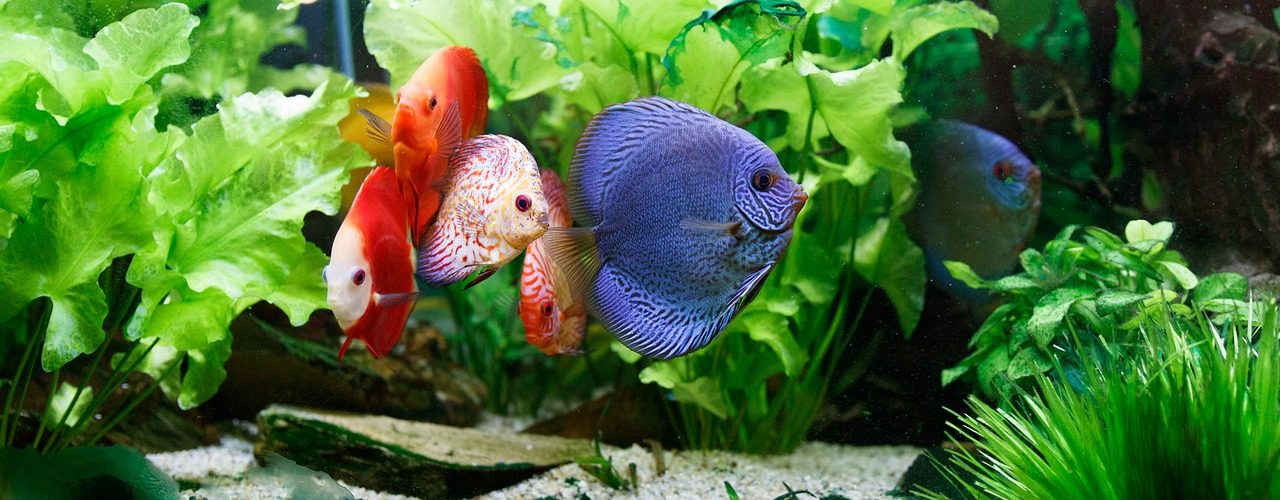Last Updated on November 19, 2022 by Matt
The Python Water Changer system provides you with a very quick and easy way of undertaking water changes, as well as an easy way of cleaning the substrate of your fish tank.
- Easy To Use: Hassle free! No buckets, no siphons, no mess, no tank tear downs ever again! Every aquarium owner has felt the utter frustration of lugging a heavy, water filled bucket to your aquarium and spilling it on the floor. But those days are gone! Let the Python put the effort in and do all of that heavy lifting for you!
- Master Routine Maintenance: Regular water changes and a maintenance routine help to keep our favourite aquatic pets happy and healthy, and should be done regularly! But all aquarium owners know that maintenance and water changes can be hard to keep up with, especially with a busy schedule. The Python system eliminates the dread and frustrations associated with water changes and allows you to complete the task in mere minutes, not hours! Spend more time looking at your tank, not cleaning it!
- Everything You Need: The complete ready-to-use system comes equipped with a hose, gravel tube, switch, hose connectors, faucet pump, and brass faucet adapter so you can get started on maintenance right away. The system quickly and easily attaches to most faucet styles and can be fully installed and ready to go in less than 5 minutes!
- Gentle, Yet Powerful: The Python can quickly drain and fill your tank, but don't worry, it won't negatively impact your aquatic pets or plants! The flow is not powerful enough to cause harm or distress to fish but can pick up waste, leftover food and other organic debris with ease.
- Versatile and Reliable: Well suited for freshwater and saltwater aquariums of every size, the versatile unit both drains and fills aquariums quickly and efficiently using negative pressure from the running faucet. Heavy duty, air tight tubing promises optimal performance and ensures that not a single drop of water is spilled during use.
Water changes should be part of your weekly aquarium maintenance schedule, but can be a very tedious part of it. Not only do a lot of aquarists have an old system where you need to suck the end of a tube to create suction and risk dirty aquarium water in their mouths, but this then flows into a bucket, which as we all know can very easily end up on the floor! Not doing regular water changes can reek havoc on the nitrogen cycle.
The Python Water Changer enables you to change the water without the need to use your mouth to create suction, or to use a bucket at all. It also enables you to vacuum the substrate as you take out water. Removing debris from the substrate is incredibly important for your fish tank, as otherwise it will decompose and cause an increase in ammonia, nitrite, and nitrate concentrations in the water column. Ammonia causes ammonia poisoning even at low levels, as does nitrite, while nitrate causes nitrate poisoning at higher concentrations. Removing the source, as well as undertaking a water change at the same time means that your water chemistry will remain stable.
Phosphate can also increase if debris is left. While phosphate is a part of aquarium fertilizers and is needed in some quantity if you have a freshwater planted tank, it is incredibly damaging in saltwater reef tanks. Phosphate inhibits invertebrates such as corals, mollusks, and echinoderms from absorbing the calcium carbonate they need to make their skeletons.
IN THIS ARTICLE
Python Water Changer Review

In this article we will give an unbiased and critical review of the Python Water Changer and whether it lives up to the hype that surrounds it.
Python Water Changer Setup and Ease of Use
A huge tick in the pro column of the Python water changer is the ease of setup and use. There aren’t many parts to it really, and once you have the idea of how it works in your mind it is very intuitive.
Firstly, there is a part that attaches to the faucet on your sink; the water from the tap is what powers the Python water change, not a pump. There is then a lot of tubing, which is so that you are guaranteed to reach your tank from the sink!
Near the end of the tubing is a switch. This switch allows you to choose where you want to take water out of the tank, or add water back in. It also allows you to turn off the water flow without having to kink the hose like with other aquarium vacuum cleaners, or having to quickly run back to the faucet.
At the end of the tubing is the vacuum cleaner, which allows you to remove dirt and debris from the aquarium substrate as you remove water for a water change. As we have said in the introduction, removing this debris is essential and is as important as cleaning the aquarium filter!
The Python water changer uses something called the venturi effect to draw water from the tank. Once you’ve connected it to the faucet, turn on the tap and a pressure change is generated, which causes a vacuum to be created. This draws the tank water up the tubing and out into the sink. When you turn the switch to the fill position water from the faucet flows into the tank.
Construction
The construction of the Python water changer is very robust and sturdy. With aquarium vacuum cleaners the construction is normally the biggest drawback, as they can feel cheap, tacky, and not really up for the job.
Not so with this model. The tubing itself feels thick and very well made, and just feels like it will last a long time. The same can be said about each individual section of the Python water changer. Each connection feels stable and well fitted, and doesn’t give any indication that any leaks will occur. The pump and faucet connection seems well made, as does the switch and gravel vacuum tube.
There are four different size options available. These size options describe the length of the tubing, not the size of the gravel vacuum. The gravel vacuum is a standard 10 inches unless a longer extra is purchased. The sizes available for the Python water changer are 25 feet, 50 feet, 75 feet, and 100 feet.
Extras
Along with the sheer ease of use, the range of available products to customize the Python water changer makes it able to maintain full function for a huge range of fish tanks. These extras aren’t included with the standard package, so you’ll have to pick them up separately.
Perhaps the most useful extra available is the Python Universal Adapter. This adapter ensures that the pump will fit any faucet. It is incredibly frustrating if the pump doesn’t actually fit the faucet that you have. To save a trip to the hardware store, this adapter is designed to marry up the faucet and the pump.
Another very useful extra is the hands free aquarium hook. This hook is designed to hold the gravel tube in the tank, so you can empty or fill the tank hands free. Although make sure you actually keep an eye on the water level! The Python water changer works pretty fast, and you can easily end up with water everywhere if you go doing something else as it’s filling the tank!
The gravel tube comes 10 inches long as standard. While for the average tank this length is ample, if your tank is deeper you’ll end up with wet hands and sleeves if you want to be vacuuming the substrate. To combat this Python has a range of different gravel tube lengths available. The different lengths available are 20 inches, 24 inches, 30 inches, 36 inches, and 48 inches.
On the rare occasion that you can’t reach your fish tank from your faucet with the supplied tubing, Python also offer hose extensions which should sort it out no problems! These hose extensions are designed to simply be a plug and play. The 20 foot extension hose should be more than enough to cover you!
Problems
There is really not much to say against the Python water changer. As we have said, it is very easy and intuitive to use, and has many different sizes to suit your needs. The construction is also very solid, and it doesn’t feel like it’ll spring a leak with continued use.
There are also many additional bits and pieces you can buy for the Python water changer such as a hands free hook, velcro straps, and longer substrate cleaning tubes. While it is great to have the option to buy these extras, it seems like the hands free hook and velcro strap should be included with the regular product seeing as how useful they are, and an option for a longer gravel tube on purchase seems like an ideal situation. There’s no point in getting a 10 inch tube if your tank is 30 inches deep!
However these points are just nitpicking. All in all the Python water changer is a brilliant piece of kit.
The only real issue of contention is that new water added to a tank should be treated first to remove chlorine, chloramine, heavy metals, and other contaminants before being added. Ideally it should also be the same temperature. By adding water from the faucet straight to the tank via the Python water changer it could lead to issues. However many aquarists simply hold a thermometer under the faucet to ensure it is a similar temperature, add the dose of water conditioner that their tank requires to the partially drained tank, then fill the tank via the water changer. Users who have used this method say they have had no ill effects whatsoever. Still, some like to instead fill a bucket with the water they need, then ensure it is treated and the right temperature using a spare aquarium heater.
For freshwater tanks, either method seems to work just as well, although the first involves a lot less effort! For saltwater reef tanks though, this may not be the best idea. Corals such as acans are very sensitive, and need the water conditions and chemistry to be stable. Adding water straight from the faucet will disrupt them.
How does it fare against competitors?
The main competitor that the Python water changer has is the Aqueon water changer. These two have some major similarities, and some big differences as well. Visually the two products are very similar; they both have a gravel tube, hosing, a flow valve, and a faucet connector.
- Makes routine water changes easier, eliminates spills and heavy lifting!
- Attaches to faucet: removes dirty water and can return clean water
- Vacuums out the debris in gravel right down the drain
- Simply turn on your faucet to begin siphon
- Be sure to add Aqueon Water Conditioner when adding clean water to aquarium
The Aqueon water changer has the edge on the gravel tube; it is easier to handle and feels better in the hand. However the Python water changer can be extended by the purchase of longer gravel tubes. This is extremely useful for large deep aquariums, while the Aqueon water changer doesn’t have the option to extend the tube.
In terms of tubing, the Python water changer’s hose feels a lot teacher and sturdier. It doesn’t kink like the Aqueon water changer hose, and just feels like it will last longer. The same can be said of the flow valve as well. Aqueon’s feels a little flimsy, while the one from Python, while still plastic, feels a lot firmer and thicker, and just better made in general.
The faucet connectors do have a significant difference. The connector on the Aqueon water changer is made of plastic, while the connector on the Python water changer is constructed from metal. As you can imagine, the metal connector from Python feels a lot stronger, and more able to handle the water that powers the suction.
Conclusion
Overall, the Python water changer is a brilliant product which does its job extremely well. It is extremely well-made and is constructed of sturdy, thick plastic. It is very simple to set up and get started with, and is also very intuitive to use. Which makes it ideal, no-one wants to be struggling to undertake a water change.
The extras that you can purchase for the Python water changer can make life even easier, such as the hands free hook and gravel tube extensions.
All in all, the Python water changer is a brilliant product, and don’t hesitate to pick one up!









